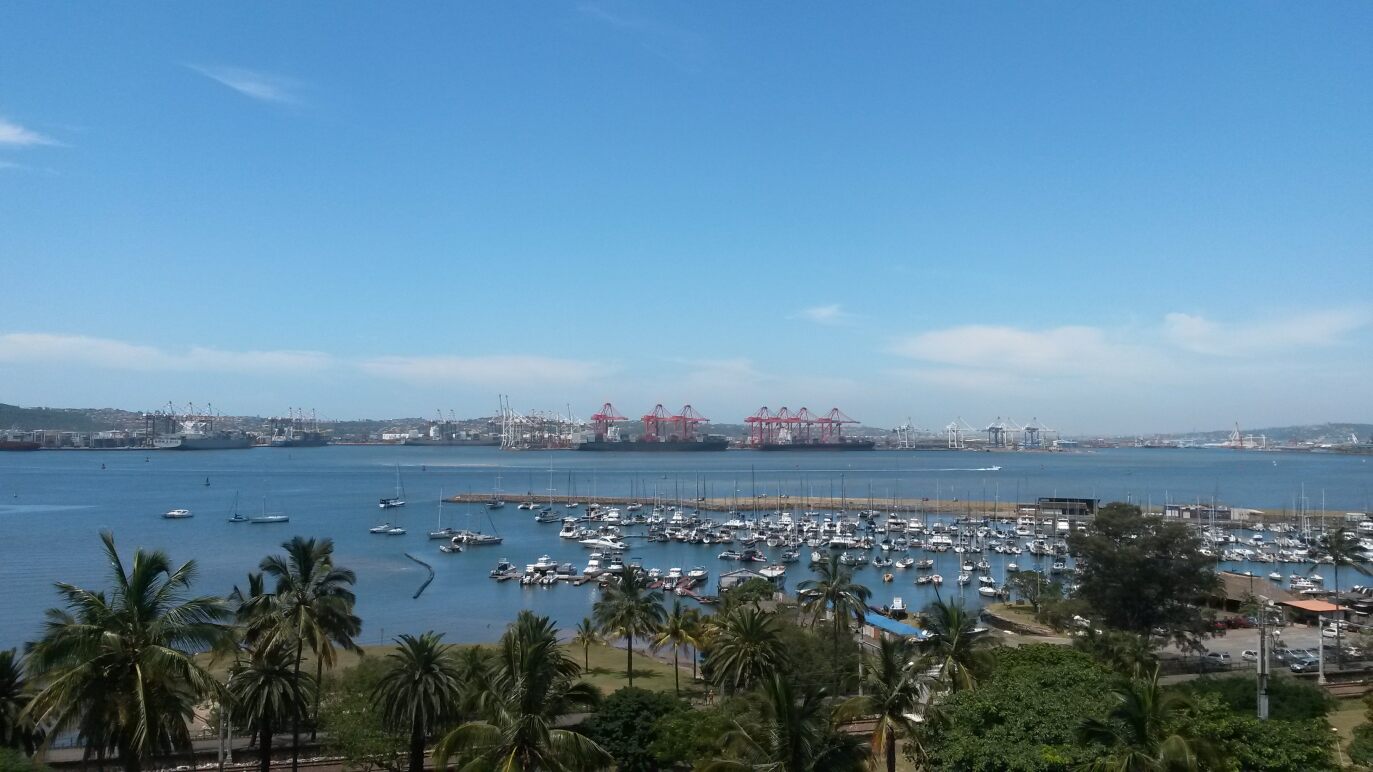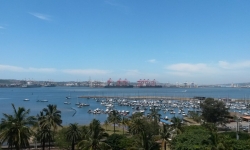CSIR helping build Africa’s blue economy through green ports
Ports are catalysts for economic development critically needed in Africa, but they are also significant features of coastlines undergoing rapid urbanisation, where access to natural resources is increasingly contested. In the African context, coastal communities are deeply dependent on coastal resources for food, building materials and their livelihoods. Ports must account for this or face the consequences of losing their social licence to operate.

The equal partner strife: port development and the natural environment
Researchers from the CSIR have contributed to finding innovate ways of integrating engineering and environmental principles to support the long-term sustainability of African ports, developing and disseminating tools for green port development and operation.
Ports are catalysts for economic development critically needed in Africa, but they are also significant features of coastlines undergoing rapid urbanisation, where access to natural resources is increasingly contested. In the African context, coastal communities are deeply dependent on coastal resources for food, building materials and their livelihoods. Ports must account for this or face the consequences of losing their social licence to operate.
“Through our working experience in South African ports, we have some concrete examples of where port development has either been prohibited or significantly delayed based on environmental considerations,” says CSIR senior researcher Steven Weerts. “There is also sound evidence in the wider West Indian Ocean region of building tensions between communities who are losing access to coastal resources and ports who regard the environment as a ‘green handbrake’.
A green light for a new generation of ports
Researchers from the CSIR led a collaboration with Delft University of Technology, Netherlands, to understand the root causes of this problem and propose solutions. In a paper recently published, the team advocates for a paradigm shift from the traditional concept of port infrastructure systems to include natural infrastructure. “It’s a fundamental starting point to re-position the environment, and the ecosystem services it provides to both port operators and wider coastal societies,” explains Dr Susan Taljaard, CSIR principal scientist. The work went further to develop a framework for integrated port management which aligns engineering and environmental processes in ports. “It provided us with the opportunity to show very clearly how the suite of environmental management tools should fit into established port planning, engineering and operational cycles, and more importantly, how these tools can help, rather than hinder, ports to achieve their primary objectives as transportation hubs and trade facilitators,” says Taljaard.
The CSIR team went on to identify some of the challenges to the uptake and application of environmental management tools in Africa, an issue that poses a direct risk to sustainable port development. At the core of this is the implementation of environmental management systems (EMS). This motivated a deeper analysis of EMS in African ports, again, in collaboration with researchers at the Delft University of Technology and with the intention of understanding the problem but also coming up with solutions. This work was also recently published in a second journal article ‘Adapting environmental management systems for African ports’. The work followed a design science research methodology, using practical and theoretical knowledge to design and refine a framework to assist in moving from problem space to solution space. Taljaard explains: “We developed a prototype EMS framework specifically for ports, based on international best practice but built explicitly on a Plan-Do-Check-Act model, and then tested it through two lenses. The first was to determine if it addressed environmental and social issues pertinent in an African context, and the second was to check that it met criteria for successful implementation of integrated coastal management, the broad domain within which port environmental management is situated.” The result is a framework that can be used as a logical and structured method to initiate the implementation of EMS in African ports more effectively, and one that is compatible with international standards such as ISO 14001.
Less business than usual and more smooth sailing to future green ports
The novel and place-based research found immediate traction in the region, with environmental and regulatory stakeholders. The United Nations Environment Programme (UNEP) Nairobi Convention saw immediate value in the work and asked the CSIR team to partner with it in the development of a toolkit for sustainable port development for the West Indian Ocean. “It was a great validation of our work. UNEP had a pre-established agenda to help countries embed port sustainability in the West Indian Ocean, where both mainland African and island states have a significant amount to gain through the growth of maritime sectors and the blue economy. They recognised our potential technical contribution and asked us to lead a regional green port project in partnership with the Maritime Technologies Cooperation Centre, Africa, and Macquarie University in Australia,” says Weerts.
This work has only recently been completed. It involved a comprehensive stakeholder engagement process, with several workshops being held with representatives from port sectors from across the West Indian Ocean region. One of the work packages involved a scenario analysis to build a business case for sustainable ports. It investigated a range of scenarios from ‘business as usual’ to ‘supporting sustainable ports’ and received great interest from port stakeholders who could apply it to their national situations. The final toolkit has been submitted for review and includes a wide range of practical interventions that can be applied in port planning, development and operation to attain long-term sustainability. With various nations in the West Indian Ocean having already developed and adopted green port policies, the toolkit is perfectly timed for uptake.
The science-based outputs generated from the project will now be shared with national governments to support and guide them in the development of national policies for sustainable port development. This will be achieved through the Science-to-Policy Platform supported by the Nairobi Convention. Further, the outputs will be shared with port developers and operators in the region to support and guide them in the practical implementation of sustainable port development options.
Interest in the work that the CSIR is doing in ports, and specifically its focus on supporting sustainable port development in Africa, is spreading across the continent. The team was recently invited by the Arab Academy for Science Technology and Maritime Transport, in cooperation with the Egyptian Ministry of Foreign Affairs, to present to an African Development Senior Managers’ Forum with the aim of building capacity in environmental management in Africa’s seaports towards a sustainable African maritime industry.
Local uptake
The CSIR has a long history of supporting South Africa’s (Transnet) National Ports Authority (TNPA) in the engineering and environmental fields, and it’s fitting that the work is being taken up locally. The global sustainability initiative is guided (and driven) by the United Nations Sustainable Development Goals. Organisations in all sectors are focusing on sustainability reporting to communicate their performance and impacts on a wide range of sustainability topics, spanning environmental, social and governance parameters. Here too, the CSIR is supporting the port sector.
The Coastal Systems team has developed a sustainability performance index for application in ports, and is currently testing its application and refining it for local uptake with the TNPA. “The partnership has been valuable for both organisations. For us, it’s provided an opportunity to test our initial ideas and refine the concepts. That puts us in a position to claim, more confidently, the validity of the index and its potential value in application in other regions, specifically in African ports. For the TNPA, it provided real traction for its Environmental Department to engage and contribute meaningfully with its corporate sustainability reporting process,” says Taljaard.
The learning here is currently being formalised in another scientific publication. “Science has a fundamental role to play in helping the port sector in Africa achieve sustainability, supporting green ports and blue economies,” says Weerts. “Publications are an important part of our process. They allow us to test our work with scientific peers from all over the world, and this provides valuable insights which can improve our outputs. But they are not our endpoint. Ultimately, we seek to embed our outputs with user groups and go further to develop practical tools which can be used to achieve sustainable development. The work we’ve done in ports, in partnership with international researchers, UNEP, and port authorities in South Africa and across the wider content has been particularly rewarding.”



